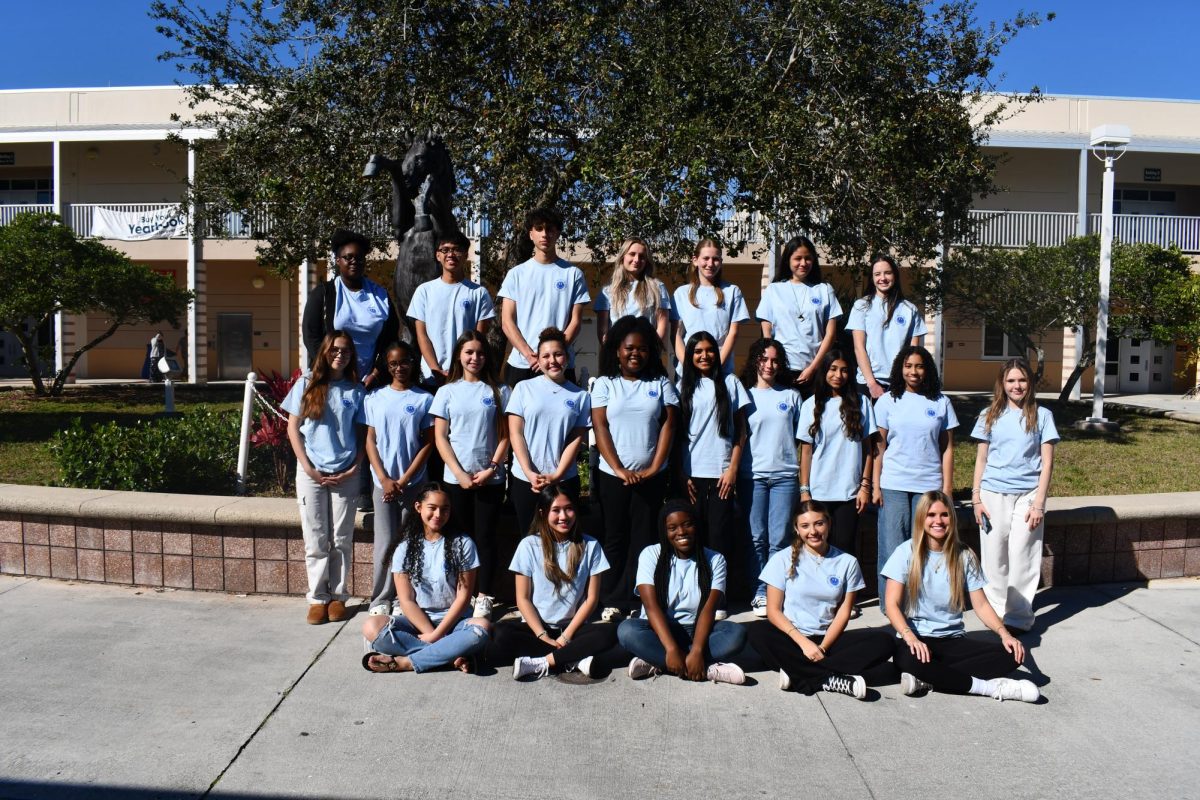Art degrees provide promising career opportunities
March 11, 2022
The role of art in society remains critical to our culture and there are many different art-focused majors that spur rewarding career paths. If you love the concept of making your own unique work, taking photos, painting, drawing, or visually expressing your ideas, you should consider enrolling in an art major.
“I have always been into art and music ever since I can remember,” said pottery teacher Mr. Rossi. “My grandmother was an artist and my uncle is a practicing artist in Rhode Island. He is currently showing his work in museums and galleries in the North East. They influenced me at a very young age to draw and paint. Also, being from New York, I was very inspired by all of the graffiti, street art, and numerous museums.”
One misconception about art majors is that it only contains drawing or painting. In reality, the art field is much broader. Students may choose from a variety of different studies such as graphic design, sculpture, printmaking, studio arts, architecture, digital media, and many more.
Studying art also comes with benefits. According to an article by Walden University, “Art education teaches students to observe the world more closely. Good art is often complex, layered with multiple elements and meanings. It takes time to find, examine, and consider the numerous details that constitute most works of art. This process of observation and study helps teach students to more closely observe and analyze the world around them—skills that make up the bedrock of critical thinking.”
Others argue that it can help develop critical thinking skills and programs promote constructive criticism, empathy, and discipline. In the process of becoming an artist, you will learn to work both independently and collaboratively and gain experience in time management.
Additionally, art subjects encourage self-expression and creativity which can build confidence as well as a sense of individual identity. The creativity that comes from these endeavors can improve health, happiness, and wellbeing. Studies from the McLean Hospital in Belmont, Massachusetts show that engaging in art can be very valuable in managing personal issues such as depression, anxiety, and post-traumatic stress disorder. It is a great alternative to express your emotions without words, process complex feelings, and find relief.
“I truly love making artwork because it’s a very therapeutic way to cope with life struggles or any overall stress going on outside of school,” said sophomore and pottery student Siera Chaudry. “It’s like a way to escape from reality.”
In addition to personal benefits, studying art can lead to meaningful and sustainable career paths. Murray State University reports that “life ‘satisfaction’ relative to a career in art reports 87 percent satisfaction — a much larger percentage of contentedness than reported by other alumni groups (compared to a 47 percent satisfaction score in accounting).”
Some common jobs for art majors include becoming an animator, fashion designer, graphic designer, printmaker, and more. Higher paying jobs include gallery manager, interior designer, technical designer, and store planner. According to an article by Learn.org, the average salary of a fine artist in 2020 was $52,340.
If you’re interested in obtaining a Bachelor of Fine Arts (BFA) after high school, some of the schools with the best fine art programs according to U.S. News and World Report are the University of California Los Angeles (UCLA), Yale University, and Virginia Commonwealth University. If you’re looking for an institution dedicated to the arts, the top-ranked schools according to the same news outlet are School of the Art Institute of Chicago, California Institute of the Arts, and Rhode Island School of Design.
These programs, such as the one found at UCLA, attract stimulated and motivated students who are inspired and drawn to not only the superb creative faculty and the university’s resources but also the program, which encourages them to develop as their own artists at one of the world’s leading art centers.
“I’m hoping to get into UCLA,” expressed freshman Cassidy White, who does art as a hobby. “I heard the digital art program is one of the best in the country.”
However, as with many majors, there are a few potential drawbacks when it comes to majoring in art. Art school is typically a little more expensive than the standard state school tuition. Take the Ringling College of Art and Design in Sarasota, Florida for example. The average cost to attend before financial aid is over $49,000 per the U.S. Department of Education, but this doesn’t include the additional $22,000 worth of fees for books, room, and board.
Also, majoring in art doesn’t always mean that you’ll end up doing art, and your degree doesn’t always guarantee you a job. According to the U.S Bureau of Labor Statistics, the unemployment rate for artists was 10.3 percent in 2020, up from 3.7 percent in 2019. Additionally, a report by BFAMFAPhd found that out of the 2 million art graduates around the world, about 200,000, or 10 percent, earn their living primarily as artists.
“I originally went to school to be an audio engineer and worked in the music industry,” explained Rossi. “I recorded and mixed music for major recording artists and Grammy-winning producers for over 10 years in New York. After working in the music industry for that time, I wanted to get back to art. I decided to teach because I love to work with new artists, inspire people, and help develop students’ artistic abilities.”
Despite the challenges that appear when pursuing a career in art, the field is filled with numerous opportunities and personal benefits. It is always important to consider the numbers when deciding what to do after high school, but it is just as important to follow your passions.
“If you want to be an artist, you have to live and breathe art all day every day,” said Rossi. “Create something every day, even if you don’t like it. Get involved in as many art shows as possible, collaborate with other artists, don’t be afraid to push the limits, and be creative!”



